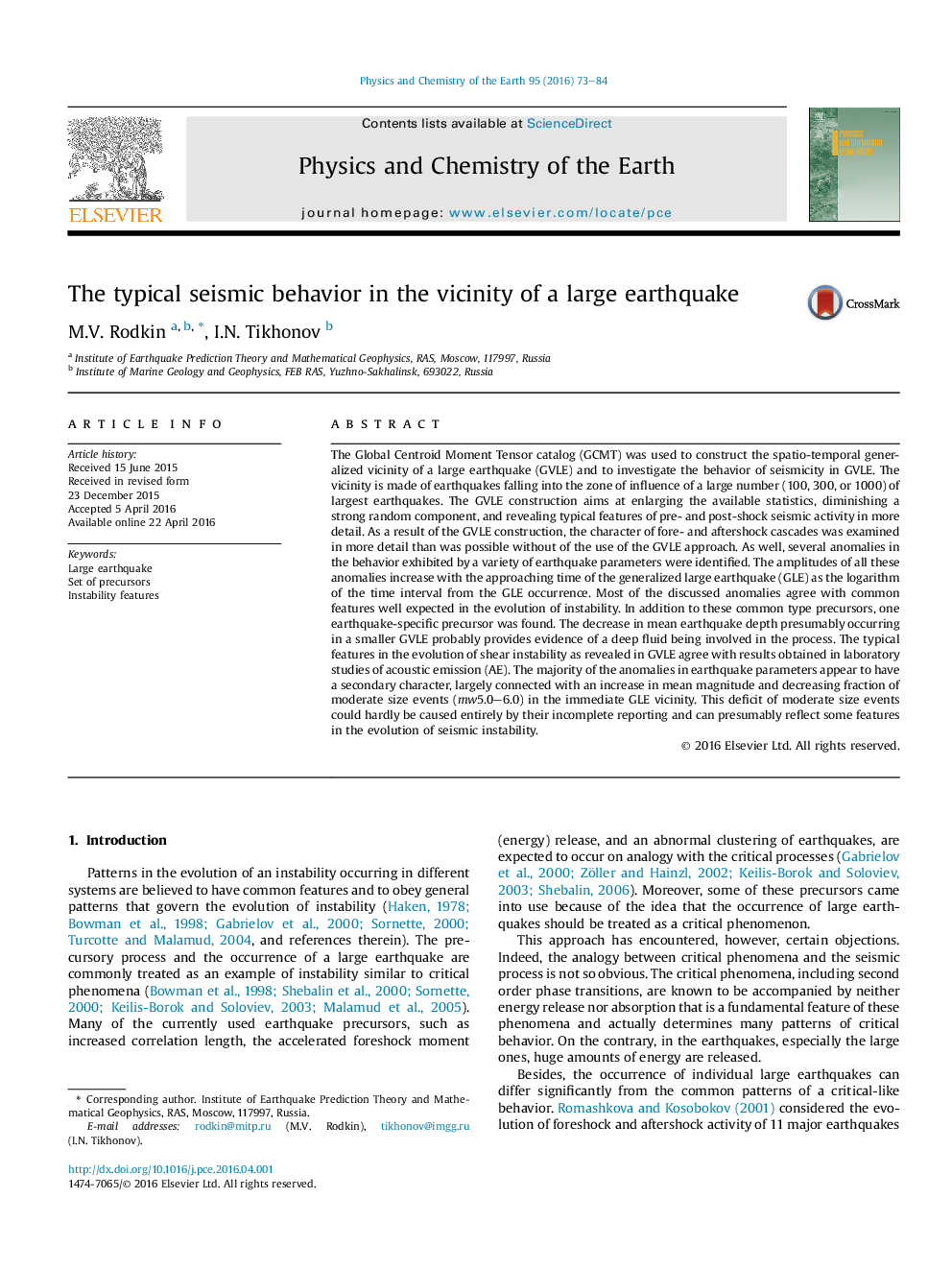| Article ID | Journal | Published Year | Pages | File Type |
|---|---|---|---|---|
| 4720789 | Physics and Chemistry of the Earth, Parts A/B/C | 2016 | 12 Pages |
•Large earthquake generalized vicinity (LEGV) method enlarges available statistics.•The preliminary results of examination of the seismic regime in the LEGV are confirmed.•The tendency of “floating up” of earthquakes is revealed in the close LEGV.•The tendency of “floating up” of earthquakes indicates the deep fluid involvement.•The deficit of weaker earthquakes was revealed to occur in the close LEGV.
The Global Centroid Moment Tensor catalog (GCMT) was used to construct the spatio-temporal generalized vicinity of a large earthquake (GVLE) and to investigate the behavior of seismicity in GVLE. The vicinity is made of earthquakes falling into the zone of influence of a large number (100, 300, or 1000) of largest earthquakes. The GVLE construction aims at enlarging the available statistics, diminishing a strong random component, and revealing typical features of pre- and post-shock seismic activity in more detail. As a result of the GVLE construction, the character of fore- and aftershock cascades was examined in more detail than was possible without of the use of the GVLE approach. As well, several anomalies in the behavior exhibited by a variety of earthquake parameters were identified. The amplitudes of all these anomalies increase with the approaching time of the generalized large earthquake (GLE) as the logarithm of the time interval from the GLE occurrence. Most of the discussed anomalies agree with common features well expected in the evolution of instability. In addition to these common type precursors, one earthquake-specific precursor was found. The decrease in mean earthquake depth presumably occurring in a smaller GVLE probably provides evidence of a deep fluid being involved in the process. The typical features in the evolution of shear instability as revealed in GVLE agree with results obtained in laboratory studies of acoustic emission (AE). The majority of the anomalies in earthquake parameters appear to have a secondary character, largely connected with an increase in mean magnitude and decreasing fraction of moderate size events (mw5.0–6.0) in the immediate GLE vicinity. This deficit of moderate size events could hardly be caused entirely by their incomplete reporting and can presumably reflect some features in the evolution of seismic instability.
